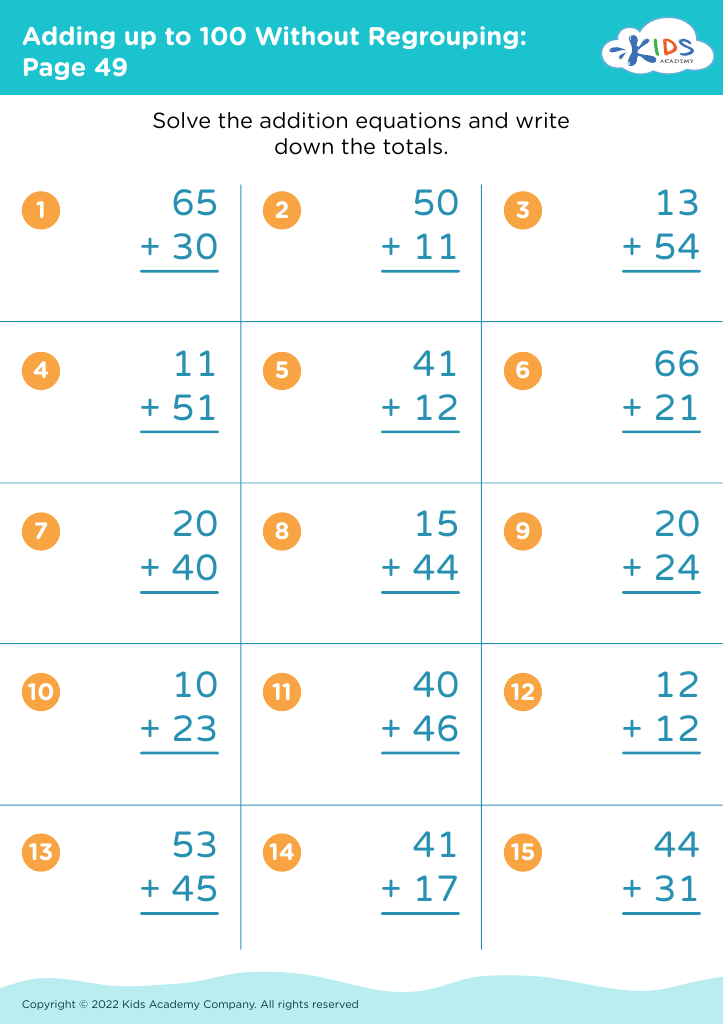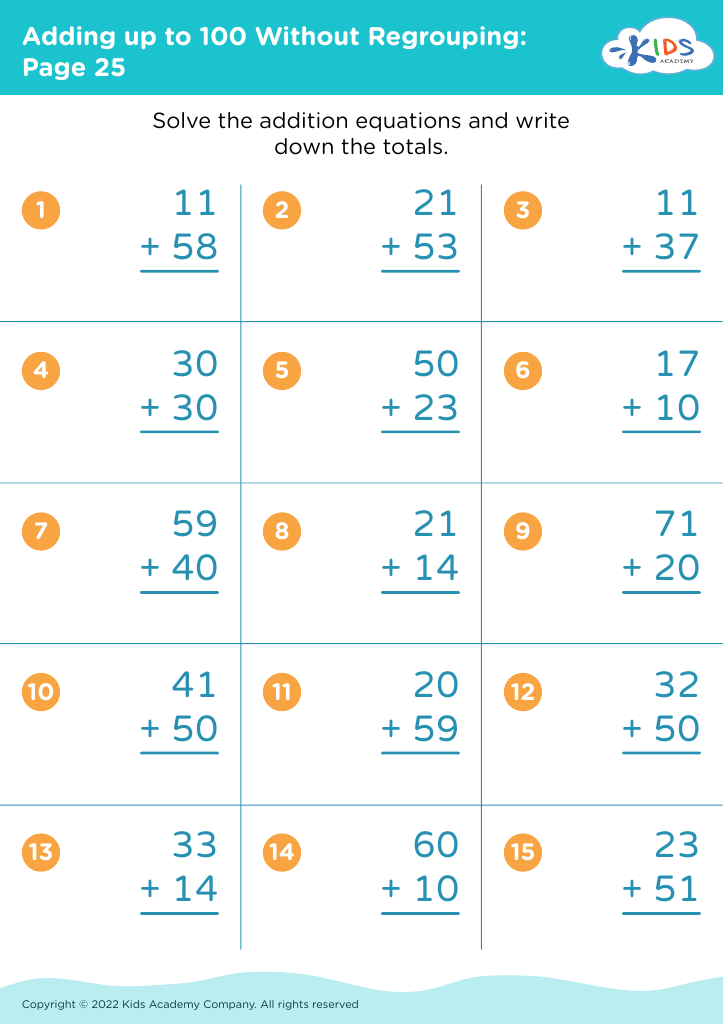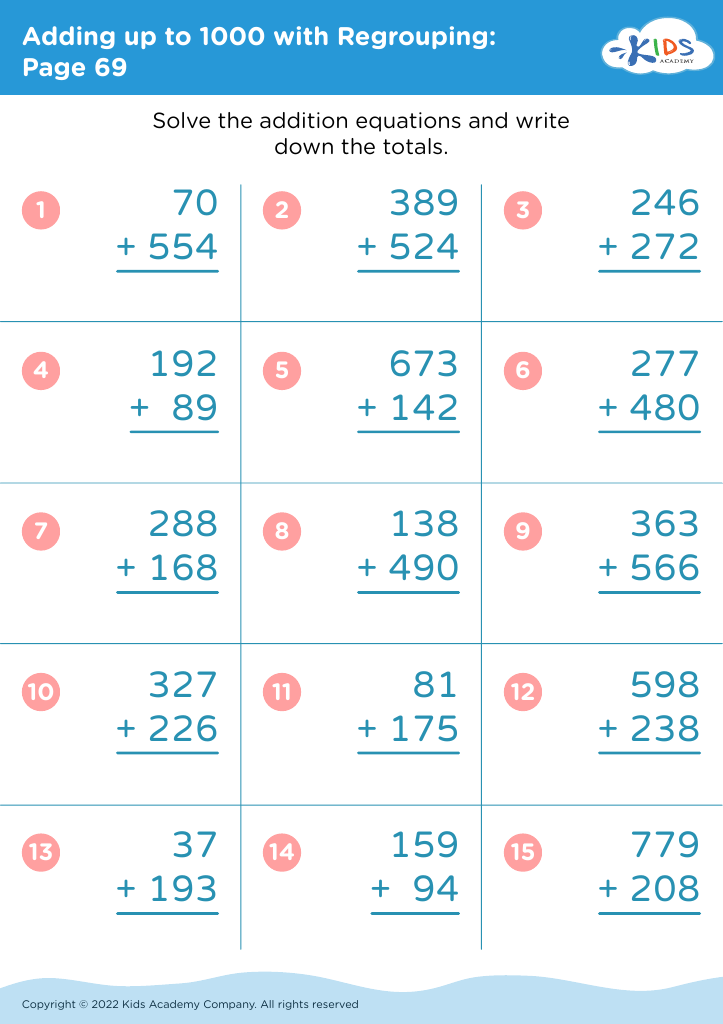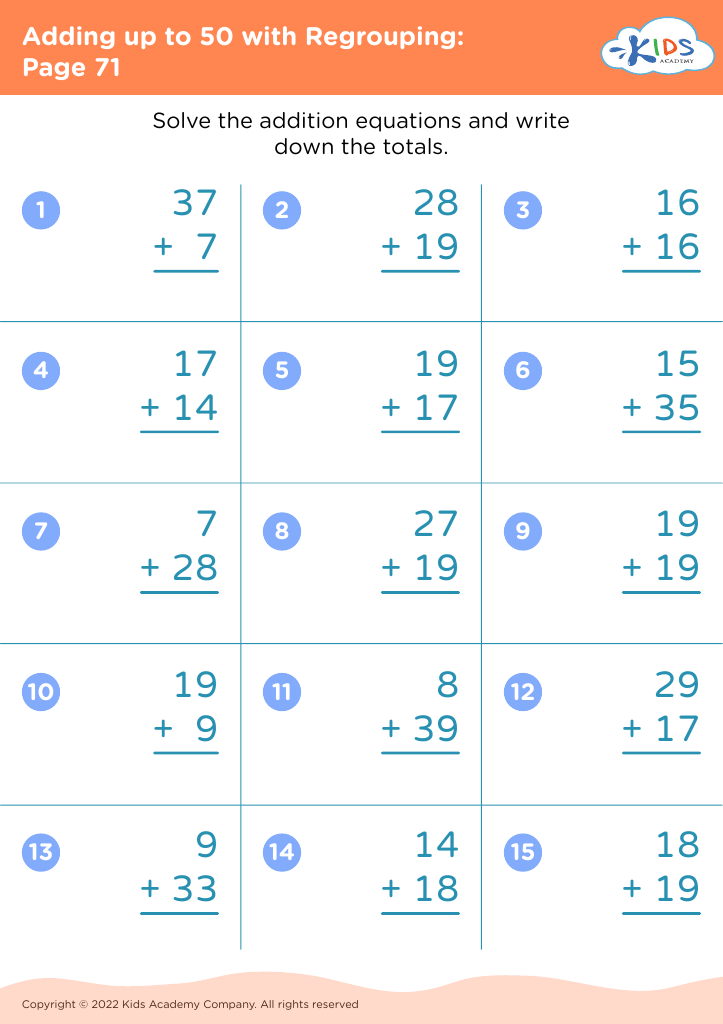Visual discrimination Addition Worksheets for 8-Year-Olds
4 filtered results
-
From - To
Welcome to our Visual Discrimination Addition Worksheets designed specifically for 8-year-olds! These engaging, interactive worksheets help enhance visual discrimination skills while reinforcing essential addition concepts. Children will enjoy identifying and distinguishing between various visual elements related to addition problems. Our carefully crafted activities make math both fun and educational, promoting critical thinking and attention to detail. Plus, they're easily accessible and printable for at-home learning or classroom use. Boost your child's confidence in math as they practice using these fun worksheets, turning learning into a captivating adventure. Explore our resources and watch your young learners excel in visual differentiation and addition!
Visual discrimination skills are crucial for 8-year-olds, particularly in subjects like mathematics where visualizing relationships between numbers is vital for understanding concepts like addition. Developing visual discrimination supports children's ability to distinguish between similar shapes, numbers, and quantities, which enhances their capability to solve math problems accurately.
For parents and teachers, fostering strong visual discrimination skills can lead to improved academic performance and confidence in math. When children can quickly comprehend visual information, they can engage more readily in classroom activities and discussions, promoting overall learning success. Furthermore, these skills are foundational for more complex mathematical tasks in the future, including multiplication and geometry.
Additionally, visual discrimination plays a role in the development of critical thinking and problem-solving skills. Helping children recognize patterns and differences in numbers and symbols encourages analytical thinking, which is essential not only in academics but also in everyday life.
By prioritizing visual discrimination exercises, parents and teachers can facilitate a proactive approach to math learning that benefits long-term understanding and achievement. Encouraging activities like matching games, puzzles, and visually-oriented math tasks can significantly improve these skills, laying the groundwork for future educational success.







.jpg)


.jpg)








